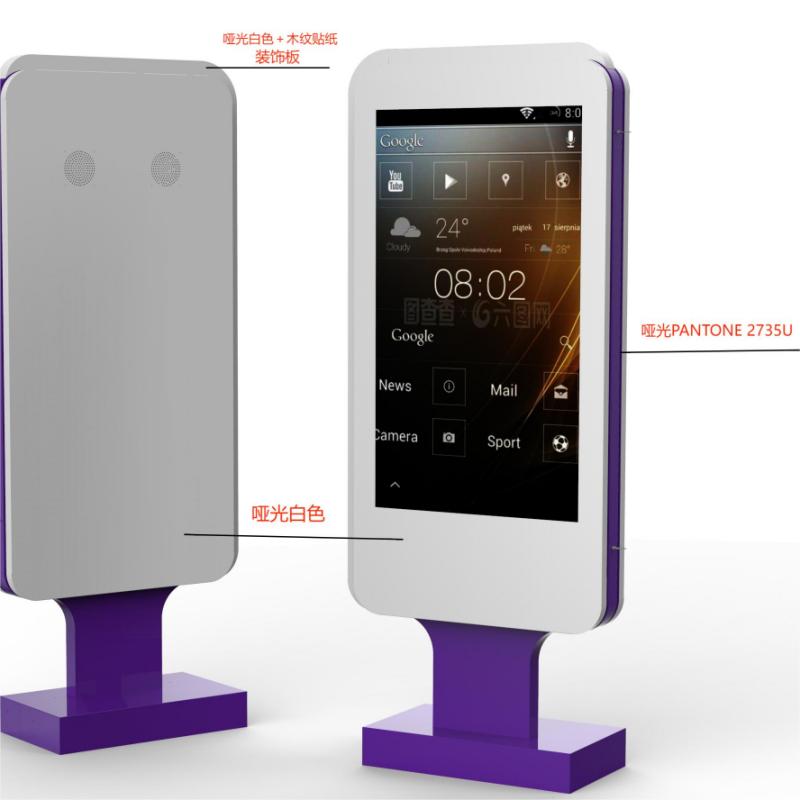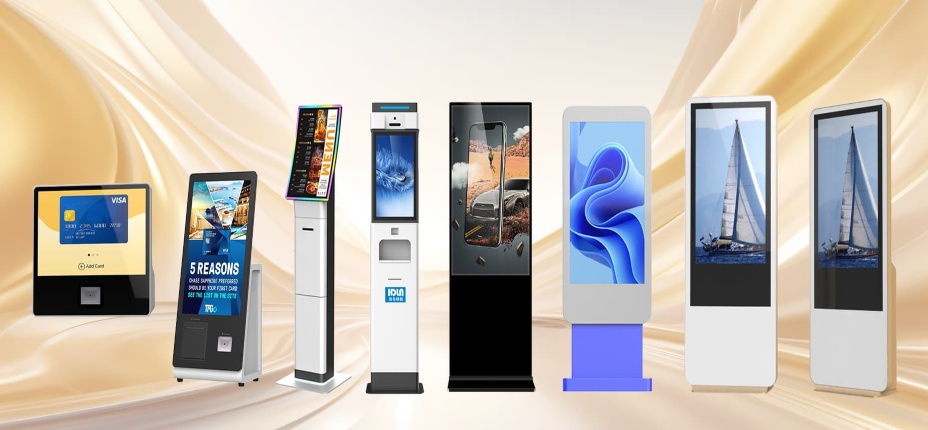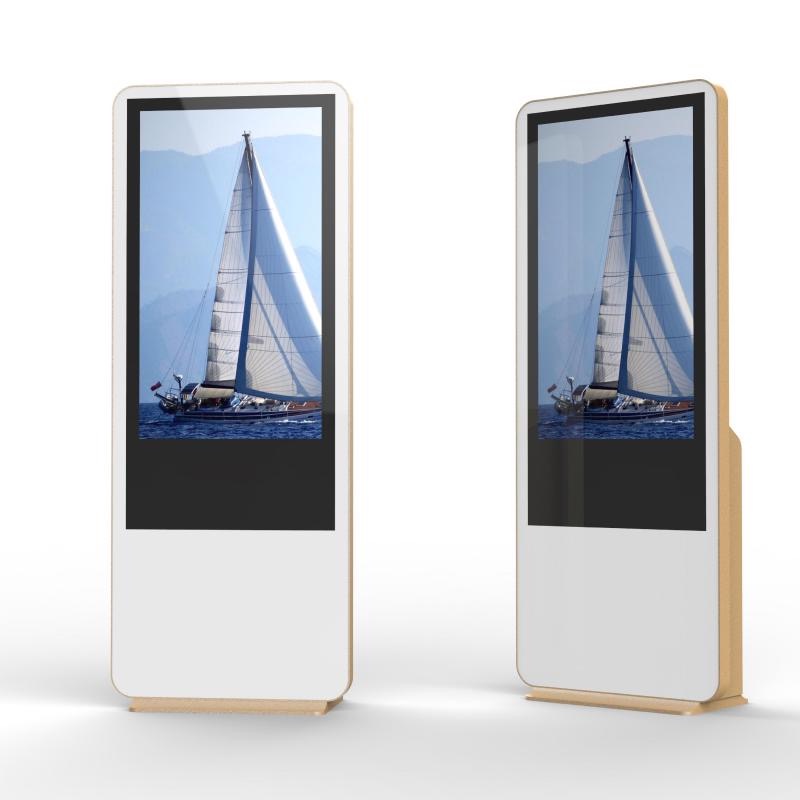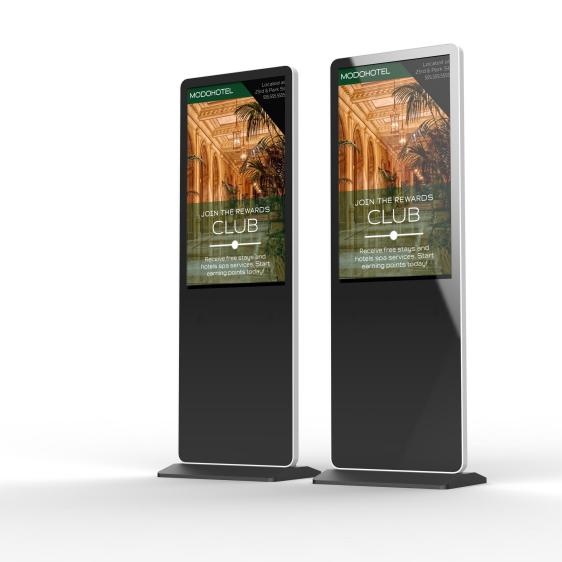





Digital map kiosks in parks are increasingly in demand due to the growing need for convenient navigation and real-time information. As a professional kiosk manufacturer, we recognize the shift towards interactive solutions that enhance visitor experiences. These kiosks provide detailed maps, points of interest, and event information, reducing the need for physical maps or staff assistance. With the rise of smart cities and digital transformation, parks and public spaces are adopting digital map kiosks to improve accessibility and efficiency. Our kiosks are designed for durability and easy customization, addressing the modern market's needs for user-friendly, weather-resistant solutions. Below is the detailed introduction to digital map kiosk for parks, please read it to learn more!
Park Description: Digital Map Kiosk - Outline
Park description: digital map kiosk introductionWhat is a digital map kioskDigital Map Kiosk: Functions and FeaturesBenefits of Digital Map Kiosk for Parks | Installation and Usage Guide for Digital Map Kiosk in ParkCost and ROI of Digital Map Kiosks in ParkTrends and Future of Digital Map Kiosks for ParkPark description: digital map kiosk - detailed analysis |
Digital map kiosk in parks is an innovative solution that enhances visitor experience by providing real-time, interactive information. These kiosks offer detailed maps, highlighting key attractions, facilities, and trails, ensuring visitors can easily navigate the park. With touch-screen technology, users can zoom in, search for specific locations, and even plan routes. Additionally, some kiosks may provide information on park events, weather updates, and emergency services. By integrating such digital map kiosks, parks not only boost visitor convenience but also reduce the need for paper maps, contributing to sustainability efforts. This technology-driven approach makes exploring natural spaces more accessible and efficient.
A digital map kiosk is an interactive, touchscreen device that provides real-time, detailed maps and information to help users navigate a particular area. Commonly found in parks, malls, airports, and other public spaces, these kiosks allow users to access maps, locate nearby attractions, facilities, or services, and plan routes easily. Equipped with user-friendly features like zooming, search functions, and sometimes GPS, digital map kiosks enhance the visitor experience by offering up-to-date information, reducing the need for paper maps, and promoting environmental sustainability through digital convenience.

A digital map kiosk is an advanced, interactive tool that enhances user experience by providing navigational assistance and local information in real time. These kiosks are designed for high-traffic areas like parks, shopping malls, airports, and city centers, where easy access to accurate directions and location-based details is essential. Below are the key functions and features that make digital map kiosks a valuable resource.
Touchscreen Interface: Users can explore areas with intuitive touch functionality.
Zoom and Pan: Users can zoom in or out and pan across maps to view specific areas in detail.
Search Functionality: Allows users to search for specific locations, attractions, or services.
Live Updates: Provides up-to-date information about events, facility hours, or alerts.
Traffic and Weather: Some kiosks offer current traffic conditions or weather updates relevant to the location.
Language Options: Catering to international visitors, these kiosks support multiple languages for greater accessibility.
Step-by-Step Directions: Users can receive on-screen directions to desired destinations.
Suggested Routes: The kiosk can recommend the fastest or most convenient routes for walking or driving.
Points of Interest: The kiosk highlights nearby landmarks, restaurants, shops, or attractions.
Facility Locator: Helps users find amenities such as restrooms, ATMs, or parking.
Custom Map Overlays: Locations can tailor maps to feature specific businesses or events.
Brand Integration: Some kiosks include space for advertising or branding, offering promotional opportunities.
A digital map kiosk offers numerous advantages for parks, significantly improving the overall visitor experience while enhancing park management. Here are the primary benefits:
Digital map kiosks provide visitors with real-time navigation assistance, helping them easily find trails, attractions, and facilities like restrooms or picnic areas. The intuitive touchscreen interface allows users to zoom, pan, and search for specific locations, improving their overall park experience.
Park managers can update kiosks with current information, such as event schedules, weather conditions, or safety alerts, ensuring visitors have the latest updates at their fingertips.
Digital kiosks often feature multilingual options, allowing parks to accommodate a diverse group of visitors, ensuring that everyone, regardless of language, can navigate the park efficiently.
By reducing the need for printed maps and brochures, digital kiosks help minimize waste and lower printing costs, making them a sustainable choice for park management.
Kiosks can highlight nearby attractions, educational programs, or services, promoting local businesses and encouraging visitors to explore more of what the park and surrounding areas offer.

Before installing a digital map kiosk in a park, the first step is choosing the right location. Ideal spots are near main entrances, visitor centers, or high-traffic areas like picnic grounds and restrooms. Ensure the site is easily accessible and provides good visibility for visitors. Power supply and internet access (either via Wi-Fi or mobile data) should also be considered for seamless functionality.
Once the location is determined, the kiosk installation begins with assembling the hardware. The kiosk’s structure, typically made of weather-resistant materials, must be anchored securely, especially in outdoor environments where it will face varying weather conditions. Ensure the kiosk is designed to endure rain, UV exposure, and temperature extremes. The touch screen should be durable and responsive, with anti-glare and vandal-resistant features for public use.
Digital map kiosks require reliable power and internet connectivity. For outdoor installations, ensure power lines are well-protected, and the kiosk is connected to a stable internet source. Many digital kiosks are equipped with 4G/5G connectivity options for locations where wired connections may be difficult.
Once hardware is set up, the next step is configuring the kiosk’s software. Install the park’s digital map and set up real-time updates for points of interest, park events, or closures. The software should include a user-friendly interface with features like zooming, searching, and multiple language options. The kiosk can also include real-time alerts for weather or emergency notifications.
Before the kiosk is fully operational, it is important to run thorough tests. Verify the accuracy of the map, ensure all features (like touch screen responsiveness, language support, and real-time updates) are working properly, and check that internet connectivity is stable. Also, test the durability of the kiosk under different weather conditions if possible.
To ensure long-term functionality, the digital map kiosk requires periodic maintenance. Clean the screen regularly to prevent wear from frequent use, and check for software updates to keep the system running efficiently. It's essential to monitor power and internet connections and have a troubleshooting plan in place for any technical difficulties.
For parks with high visitor traffic, include instructional signage or digital tutorials on how to use the kiosk. Educate visitors on the kiosk’s features like route planning, facility locations, and park event updates to maximize its utility.

The cost of installing a digital map kiosk in a park can vary depending on factors such as the type of kiosk, location, and features. Below is a breakdown of common expenses involved:
Kiosk Unit: A typical outdoor kiosk ranges from $5,000 to $15,000, depending on screen size, touch technology, and materials (e.g., weather-resistant metal).
Screen: High-resolution, touch-enabled screens add $1,500 to $5,000 to the cost, depending on size and specifications.
Connectivity: Adding 4G/5G or Wi-Fi connectivity can cost $300 to $1,500, depending on the infrastructure.
Installation: Installation fees, including power setup, concrete mounting, and protective housing, typically range from $1,000 to $3,000.
Customization: Depending on the features required (e.g., real-time map updates, user interaction, multi-language support), software development costs range from $2,000 to $10,000.
Licensing and Maintenance: Software licenses for mapping tools or integrations, plus yearly maintenance, typically cost $500 to $2,000 annually.
Power Supply: Ongoing power costs will depend on usage but are generally low.
Security Features: Anti-vandalism measures or weatherproofing add approximately $500 to $1,500.
The return on investment for digital map kiosks can be significant, especially when considering their value in improving visitor experience and park management. Some key factors contributing to ROI include:
By offering visitors an easy-to-use, interactive interface to navigate the park, the kiosk can reduce confusion and improve overall satisfaction. Satisfied visitors are more likely to return and recommend the park, boosting visitation numbers.
Some kiosks can feature advertisements for local businesses, events, or promotions, generating revenue for the park. Ad revenue from local businesses or sponsors can cover part of the installation and maintenance costs.
The kiosk reduces the need for printed maps, signage, or staff assistance, leading to cost savings. Interactive kiosks allow parks to provide real-time updates about closures, events, or weather conditions without manual intervention.
By helping visitors discover new trails, facilities, and activities, kiosks promote more extensive use of park resources. This could lead to higher revenue through facility rentals, event hosting, or entrance fees.
Some kiosks track visitor behavior, collecting valuable data about which park areas are most visited or which trails are least popular. This data can guide park management decisions and improve resource allocation.

Digital map kiosks for parks are evolving rapidly with technological advancements, offering more interactive, intuitive, and informative experiences for visitors. Here are the major trends and the anticipated future direction of these kiosks:
One emerging trend is the incorporation of AR into digital map kiosks. This technology enables users to overlay digital information on real-world surroundings, offering an immersive experience. Visitors can point their smartphones at landmarks, plants, or animals to get detailed information or historical data. Parks are likely to adopt AR-enabled kiosks to further enhance visitor engagement.
Parks are increasingly moving towards eco-friendly solutions, and solar-powered kiosks are becoming more common. These kiosks help reduce the environmental impact by using renewable energy sources, lowering operating costs, and making installation easier in remote locations without traditional power infrastructure.
With advancements in artificial intelligence (AI), future digital map kiosks may feature voice-activated systems, allowing users to ask questions and receive guidance through AI-powered assistants. This makes the kiosks more accessible, especially for visually impaired individuals or those who prefer not to interact with touchscreens.
As technology advances, kiosks may be able to offer personalized recommendations based on visitor preferences, prior activities, or even real-time data. For instance, a digital map kiosk might recommend less crowded trails or alert visitors to specific points of interest based on current conditions, enhancing the overall experience.
Another growing trend is the seamless integration between kiosks and visitors' smartphones or wearable devices. Cloud-based kiosks can sync with mobile apps, allowing users to continue their park experience on their phones after interacting with the kiosk. Visitors might also be able to receive notifications about events, weather alerts, or changes in park conditions directly on their devices.
Parks are increasingly recognizing the value of data collected through kiosks. In the future, digital map kiosks will likely play a larger role in gathering visitor data, such as common routes, time spent at various locations, and popular attractions. This data can help park authorities make informed decisions about maintenance, resource allocation, and future developments, improving overall park management.
In the future, digital map kiosks will likely serve more purposes beyond navigation. Kiosks could offer a range of services, such as ticket purchasing, event registration, or even on-site purchases, such as renting bikes or booking park facilities. By expanding the functions, parks can offer a more comprehensive, self-service solution to meet visitor needs.
Many parks are exploring ways to enrich the visitor experience by turning kiosks into educational tools. Through interactive storytelling, kiosks can provide detailed information about the park's history, wildlife, and conservation efforts. Incorporating educational videos, quizzes, and interactive elements can make the kiosk a focal point for learning.
As parks are located in diverse environments, future kiosks will likely feature more durable, weather-resistant designs, capable of withstanding extreme temperatures, heavy rain, and other environmental challenges. This will ensure the kiosks can operate year-round without frequent maintenance or replacements.
The demand for digital map kiosks is growing rapidly as public spaces like parks, shopping malls, and tourist attractions increasingly turn to digital solutions. With the global trend toward smart cities and enhanced visitor experiences, the market size for digital map kiosks is expanding. Parks, in particular, are leveraging these kiosks to improve wayfinding and provide real-time information to visitors. This market is projected to continue growing as more parks and public spaces look to modernize their infrastructure.
The future of digital map kiosks lies in their integration with advanced technologies such as IoT (Internet of Things), 5G, and AI. These kiosks are evolving from simple map displays to multifunctional devices that offer real-time data, interactive content, ticketing services, and advertising. In parks, digital map kiosks are becoming an essential part of visitor engagement, offering dynamic content based on real-time updates and user preferences.
Park visitors require easily accessible, accurate, and real-time navigation information. They want to locate key attractions, services, and activities quickly without needing to rely on printed maps or asking for directions. The need for multi-language support, intuitive interfaces, and the ability to connect with personal mobile devices for seamless navigation and personalized experiences are also high on the list of user expectations.
Manufacturers should focus on developing durable, weather-resistant kiosks that can withstand outdoor conditions, ensuring longevity and minimal maintenance. Enhancing user experience with responsive touchscreens, clear visuals, and integration with mobile apps will be crucial. Additionally, expanding customization options for parks in terms of design, functionality, and branding will set manufacturers apart from the competition.
Providing excellent after-sales service is key to maintaining customer satisfaction. Offering remote monitoring, regular updates, and quick maintenance support will help reduce downtime and keep kiosks operational. Manufacturers should also analyze data collected from kiosks to provide insights that can help park management improve visitor experience, thus contributing to the overall sustainability of the industry.
This approach will not only enhance the efficiency of digital map kiosks in parks but also foster a long-term relationship between manufacturers, park operators, and users, driving continuous innovation and growth in the sector.
Address: No. 99-15, Fuan intelligent manufacturing Industrial Park, Dayang Road, Fuhai Street, Baoan District, Shenzhen, China